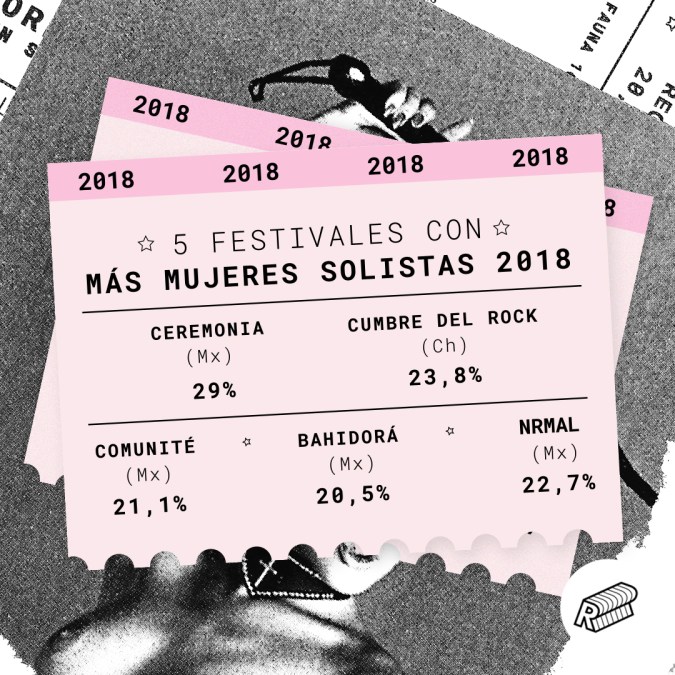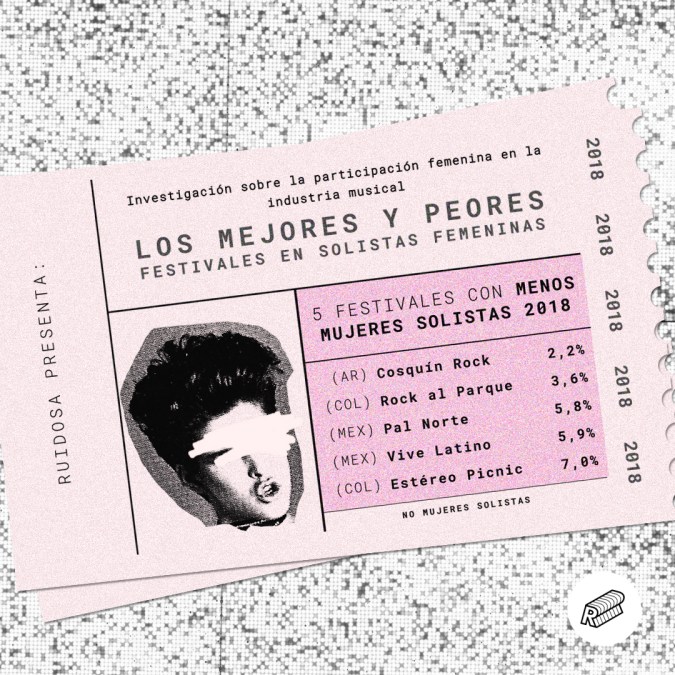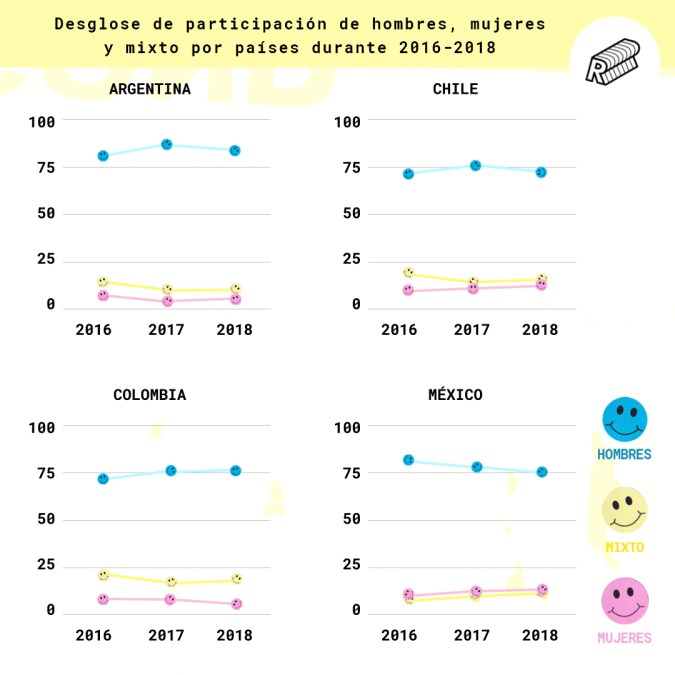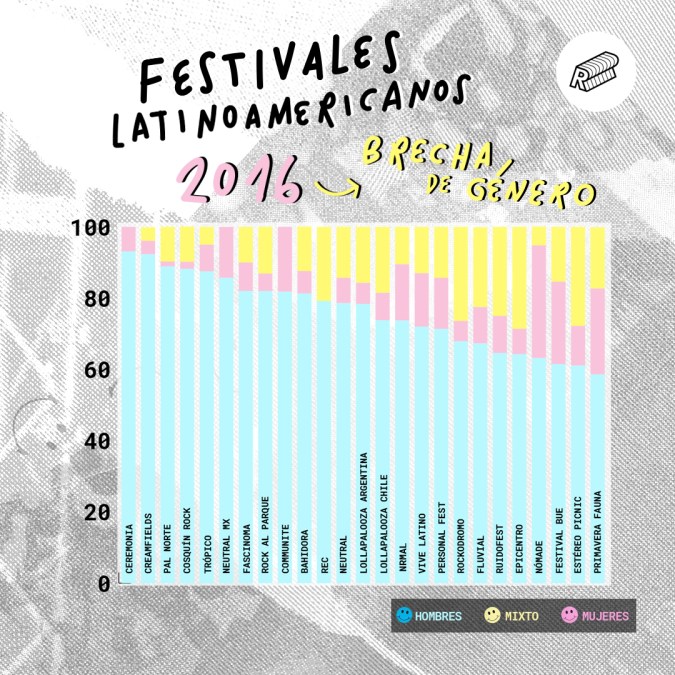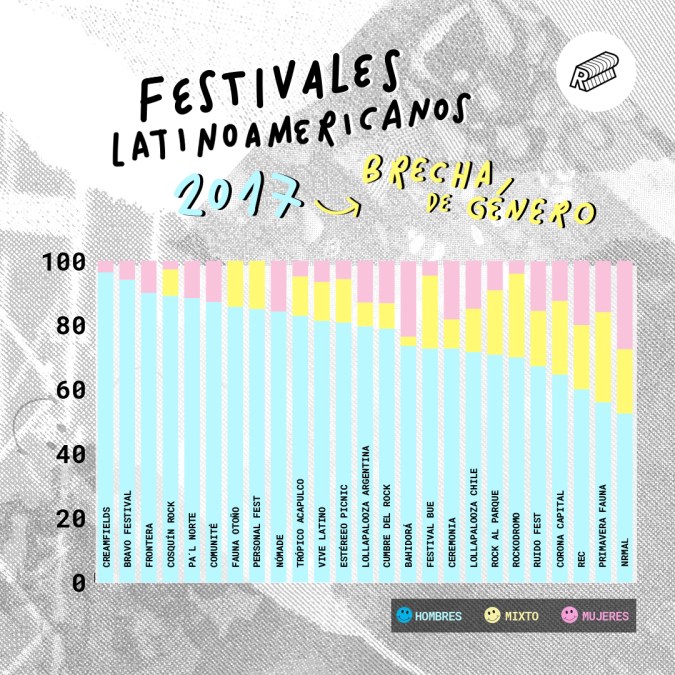This Report Analyzed the Best (and Worst) of Women’s Representation at Latin American Music Festivals
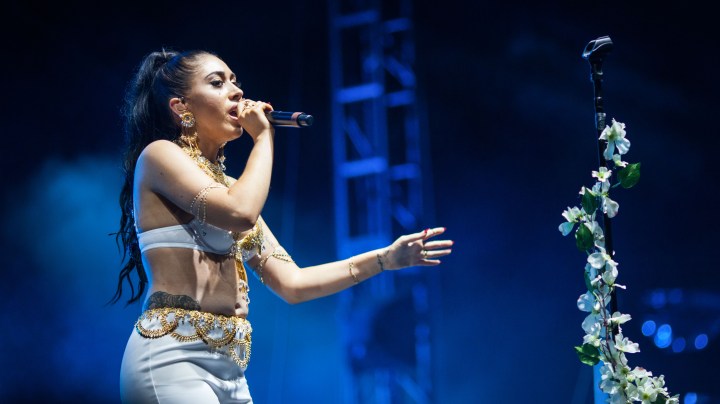
Kali Uchis at Tropicalia on Saturday, November 12, 2017 (James Bernal for Remezcla)
Over the last few years, the Chilean feminist collective Ruidosa has been taking a look at how often women make the bill at major Latin American music festivals. The powerhouse organization crunched the numbers for 2018 and, as much of a bummer as it is, the message couldn’t be clearer: women still aren’t getting booked for festivals and organizers need to do better.
A new study released by the group shows that gender inclusivity at 66 relevant Latin American music festivals has barely made progress over the last three years. In 2016, only 9.1 percent of acts at these festivals were led by women; in 2018, that number grew to just 10.1 percent. Not one of the festival lineups managed to reach a 50-50 gender balance, and when Ruidosa calculated the averages between 2016 and 2018, they found that only 3 or less acts out of 10 are fronted by women or even made up of at least one woman.
These numbers are particularly disheartening in the context of our cultural moment, when conversations around gender disparity have spread amid the #MeToo era. All of these results still paint a bleak picture of what opportunities look like for women in music, even though it would seem that now, more than ever, things should be improving. This research shows that more work remains—and more industry leaders need to be listening. The silver lining is that there are collectives like Ruidosa forming throughout Latin America, and they’ve been fighting relentlessly to push discussions forward, bring issues to the forefront, and demand change at the highest levels.
To provide some examples of what’s working and what’s not, Ruidosa identified the festivals that tend to have the most women performing (they know what they’re looking for: Ruidosa has been putting on their own festival for a few years now). They found that Colombia’s Estéreo Picnic and Mexico’s Vive Latino had the highest percentage of women, but with rates of 7 percent and 5.9 percent respectively, even those numbers are abysmal at best. Ruidosa also found that lineups in Chile, Colombia, and Mexico are slightly more inclusive, with 20 and 30 percent of musical acts led by women or including women. The lowest representation rates occurred at festivals in Argentina, where the number of women artists lingers around 14 percent.
Festivals are just one part of creating better and healthier music scenes. Major awards and ceremonies also play a role, and Ruidosa has been leading the charge to point out the disparities that plague these milestone events as well. Earlier this year, they examined women’s representation at major Latin music awards and unveiled some frustrating data. In 2017, only 68 women—or 14 percent—received nominations out of a possible 504 awards, while their male counterparts swept 78 percent of nominations. The numbers dropped even lower when it came to actual wins, with men collecting 82 percent of awards. Now that we’re all aware and armed with actual numbers, there’s no excuse for staying on the same sexist path.
Read the full study over at Ruidosa’s website, and check out graphics summarizing the report’s findings below.
